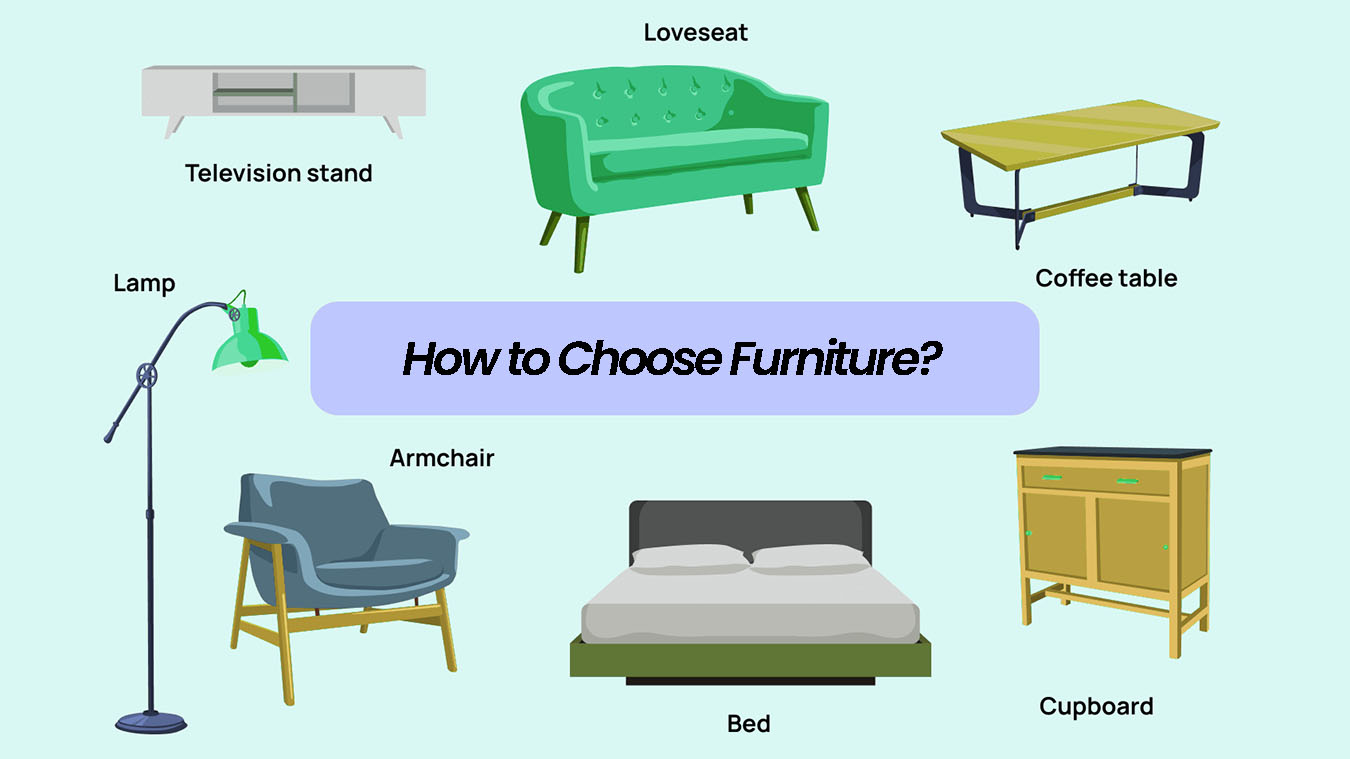Blog
How to Choose Furniture?

How to Choose Furniture?
Choosing furniture is both a practical and aesthetic decision that significantly impacts the comfort, functionality, and visual harmony of a living or working space. Selecting the right furniture requires a thorough understanding of the intended usage, available space, materials, maintenance requirements, and how it complements the surrounding environment. Here’s a comprehensive guide covering every important aspect to consider when choosing furniture.
1. Define the Usage Scenario
Start by identifying the purpose of the furniture and the setting in which it will be used:
- Residential vs. Commercial: Residential furniture emphasizes comfort and style, while commercial furniture prioritizes durability and ergonomics.
- Functionality: For example:
- Living Room: Focus on comfort, entertainment, and social interaction.
- Bedroom: Look for relaxation, sleep quality, and storage.
- Dining Area: Requires seating comfort and easy-to-clean surfaces.
- Office: Ergonomics and functionality are critical for productivity.
2. Consider Furniture Material
Material choice affects durability, aesthetics, comfort, and maintenance:
- Wood: Timeless and sturdy; available as solid wood (durable and expensive) or engineered wood (affordable but less durable).
- Metal: Durable and modern; often used in industrial or minimalist designs.
- Plastic/Acrylic: Lightweight and cost-effective; ideal for kids’ rooms or modern designs.
- Glass: Sleek and elegant; often used for tabletops, but requires frequent cleaning and caution.
- Upholstery:
- Fabric: Comfortable and available in many patterns, but prone to staining.
- Leather: Luxurious, durable, and easy to clean, though costlier.
- Microfiber: Affordable, soft, and resistant to stains—great for high-traffic areas.
3. Size and Scale
- Measure the space carefully before purchasing. Account for walking areas (at least 18–36 inches between items).
- Scale appropriately:
- Avoid oversized furniture in small rooms—it can dominate the space.
- In large rooms, small furniture may look out of place and fail to create a cohesive design.
- Consider modular or multifunctional furniture (e.g., sofa beds, storage ottomans) for compact spaces.
4. Placement and Layout
- Visualize or sketch the room layout.
- Consider natural lighting and traffic flow.
- Avoid blocking windows or pathways.
- Use area rugs or lighting to anchor specific zones (e.g., a reading nook or a dining area).
- For open-plan spaces, choose furniture that complements the flow and doesn’t obstruct views or movement.
5. Color Matching: Indoor and Outdoor
- Indoor Matching:
- Use a neutral base and add color through accents like cushions or throws.
- Match furniture color to wall tones, flooring, and overall style (modern, traditional, minimalist).
- Complementary or analogous color schemes create visual harmony.
- Outdoor Matching:
- Use weather-resistant materials and UV-stable finishes.
- Choose natural tones that blend with landscaping (e.g., earth tones, greens).
- Coordinate with outdoor fabrics and accessories like planters or umbrellas.
6. Maintenance and Ease of Cleaning
- For families with children or pets, prioritize durable, stain-resistant fabrics.
- Avoid high-maintenance finishes like high-gloss or untreated wood in high-use areas.
- Consider removable, washable covers or furniture protectors.
- Metal and leather are generally easier to wipe clean, while fabrics may need vacuuming or professional cleaning.
7. Cost and Budget Considerations
- Furniture cost depends on brand, materials, craftsmanship, and design complexity.
- Set a realistic budget, allocating more for essential or high-use pieces (e.g., mattresses, sofas).
- Cost ranges:
- Sofas: $300–$3,000+
- Dining sets: $200–$2,500+
- Beds: $250–$2,000+
- Look for sales, outlet stores, or second-hand options for budget savings.
- Consider value over time—investing in quality now may save on repairs or replacements later.
8. Lifespan and Durability
- Wood: Solid hardwoods (oak, maple, walnut) can last decades. Engineered woods (like MDF) have shorter lifespans.
- Upholstered Furniture: Can last 7–15 years with proper care.
- Metal: Rust-resistant metals can last a long time, especially with protective coatings.
- Outdoor Furniture: Choose weather-resistant materials like teak, aluminum, or synthetic wicker to extend lifespan.
9. Style and Aesthetic Coherence
- Choose furniture that aligns with your overall interior style:
- Modern: Sleek lines, minimal ornamentation.
- Traditional: Carved wood, ornate details.
- Rustic/Farmhouse: Natural wood, distressed finishes.
- Industrial: Metal frames, reclaimed wood.
- Mix styles carefully to avoid visual clutter—use consistent color palettes or accent pieces to tie different styles together.
Conclusion
Choosing furniture involves balancing practical considerations with aesthetic preferences. By evaluating the intended use, materials, dimensions, maintenance needs, and budget, you can select furniture that not only looks good but also serves its purpose effectively for years to come. A well-thought-out approach ensures that your investment enhances both the functionality and the beauty of your space.
